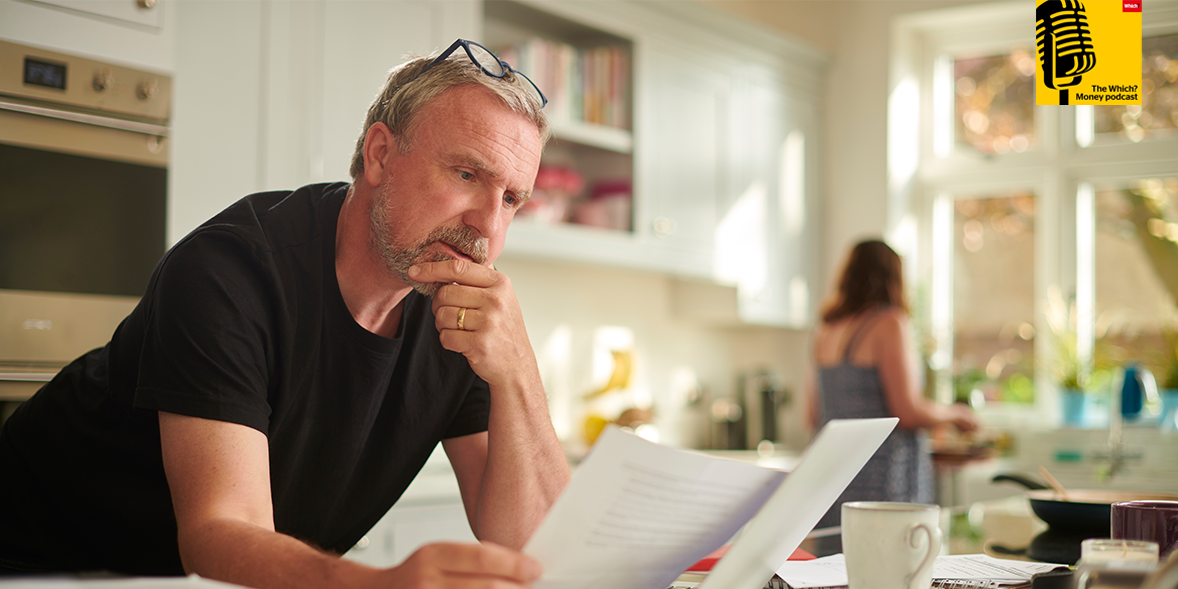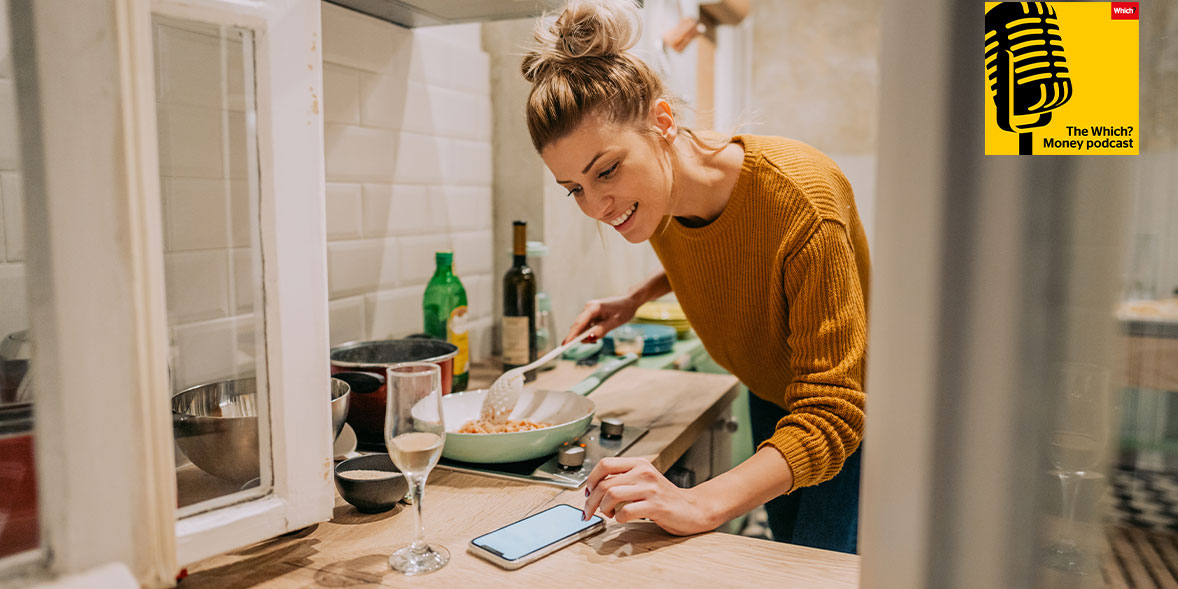
Buying a new-build home

The idea of buying a shiny new property is sure to be enticing, but - as ever - there are certain considerations you'll need to factor in before taking the leap.
Buying a new-build home is different to purchasing an existing property. This guide explains the main things you'll need to think about, including asking prices, mortgages, show homes and the process of buying a new-build.
Why buy a new-build property?
One of the main benefits of buying a new-build property is that, initially at least, it's less likely to require the same level of maintenance that you'd face with an older home. Your energy bills may well be cheaper, too, given that new-builds are usually better insulated than period homes.
If you're buying off-plan (before it's actually been built), you may also be able to choose certain aspects of the design or secure a discount on the asking price.
Schemes that offer financial help also tend to be exclusively for new-build homes. For example, the government's First Homes scheme is only available on new-builds.
However, there can be some disadvantages to buying new-build homes, including snagging problems when you move in and challenges getting a mortgage. We explain these in more detail further down.
What's included in a new-build property?
One of the great advantages of buying a brand-new property is that, often, many of the fixtures and fittings you'd otherwise have to fork out for are included in the price.
Exactly what's included varies depending on the developer and what it's offering. You may (although not always) get washing machines or dishwashers thrown in, as well as wooden flooring or carpet.
Developers will often try to upsell you extra items. Be wary here - the price of these could be inflated, so it may be much cheaper for you to source and pay for them yourself.
Today's building rules and regulations also mean that there are standards developers have to meet to make your property as energy-efficient as possible, helping you save on bills.
This means that energy-efficient features such as double or even triple-glazed windows, insulated walls, roofs and doors, and energy-efficient heating are all common in new-build properties.
- Find out more: energy performance certificates explained
Are new-build prices negotiable?
Asking prices are often plastered all over the hoardings when properties are being built.
Of course, the developers will tell you that this is the price you'll have to pay - but it is only an asking price, and you should be prepared to negotiate.
The likelihood of success will depend on a number of things, such as where the property is located and the level of demand, as well as how near to completion the development is.
If it's very early days, there might be a deal to be done, as the developer may need funding to continue the project. Conversely, if the project is nearing completion and the developer still hasn't found a buyer, you could be in a strong position here too.
Whatever stage the development is at, it pays to do your research, looking at sale prices of similar properties nearby via sites like Rightmove, Zoopla and the Land Registry.
Make sure you never pay more than what you think it's worth, as you could struggle to sell the property for the same amount further down the line and may even fall into negative equity, where you owe more on your mortgage than the value of the property.
If you don't get anywhere with haggling on the asking price, there are other ways to potentially reduce your costs. You could ask the developer to cover your stamp duty or throw in extras, such as flooring or furniture, free of charge.
- Find out more: making an offer on a house or flat
Is there a new-build premium?
You might have heard of the 'new-build premium', a term used to describe the fact that new-build homes tend to be pricier than older, but otherwise similar, properties. The reason for this difference is that everything is new and unused, energy-efficient and built to - hopefully - a high-quality spec.
There is also evidence that, on top of the standard new-build premium, some developers have been charging an even greater 'Help to Buy premium' to those using the government's equity loan scheme.
Try to stay level-headed when viewing a new-build property. Do your research, find out about similar properties in the area and on the development, and never offer more than you can afford.
- Find out more: tips for viewing a show home
The process of buying a new-build
1. Get your finances in order
Seek guidance from a qualified mortgage adviser on how much you might be able to borrow. That way, you'll know exactly what you can afford before you start going to visit properties that are beyond your budget.
It may be helpful to have a mortgage agreement in principle (AIP) before you start house-hunting, particularly if you're a first-time buyer.
It's a document from a mortgage lender confirming that it will, 'in principle', give you a mortgage for a certain amount, which you can use to prove to the developer that you'll be able to afford the property.
2. Find a property
The next step is to find a development you like the look of.
If you're hoping to get a home under the First Homes scheme, you'll need to check the development is participating in the programme. Not all new-build properties are available under the scheme, but the government says First Homes must account for at least 25% of affordable housing sold by developers.
Make sure you research the area, local amenities and developer's track record for delivering high-quality properties on time.
Once you have a clear idea of your price range, it's time to start visiting new-build developments. You'll either be taken around a show home - which will exactly or closely replicate the property you're considering buying if it hasn't been built yet - or, if even the show home hasn't been built yet, a marketing suite.
3. Make an offer and pay a fee
If you're keen to buy the property and are confident you can afford the monthly mortgage repayments, it's time to make an offer.
If your offer is accepted, you'll need to pay a reservation fee. This typically ranges from £500 to £1,000 and is usually deducted from the purchase price when you complete.
Be aware that this fee is non-refundable if you decide to pull out.
4. Start working through the legal and financial details
You'll need to appoint a conveyancer or solicitor to deal with the legal side of your purchase. It may be helpful to find one with experience of dealing with new-builds - they'll check that the developer has been given proper planning permission and that the estate has access to all the correct services, such as roads and sewers.
They'll also negotiate the date you can get your keys and manage the funds to buy the property.
At the same time, you'll start the process of applying for a mortgage, and wait while your lender has the property independently valued.
5. Wait to move in
With a new-build property, you'll exchange contracts months before you move in. This is the point at which you pay your deposit, via your conveyancer.
You'll encounter a bit of jargon when planning your move-in date.
The first is the 'short-stop' date, which is when the developer expects to finish work, and the second is the 'long-stop' date, which is the date the home has to be completed by.
In theory, the 'long-stop' date is designed to protect you from losing your mortgage offer, as (depending on the lender) they often expire after six months. The developer may be liable to pay you compensation if they don’t finish the work by the date.
This is where having a great conveyancer is vital, as they should keep both you and your mortgage lender up to date throughout the process.
Before you move in, consider having a snagging survey conducted so that any issues with the property can be identified and fixed as quickly as possible.
How easy is it to get a new-build mortgage?
Getting a mortgage for a new-build home can sometimes be harder than for an older property, as some lenders put stricter limits on the maximum value of a property on which they'll offer a loan.
This means (if you're not using a scheme such as Help to Buy or shared ownership) you might be restricted to borrowing 85% of the value of a new-build house, or 75% on a flat, while lenders may be willing to loan a bigger percentage on an older property.
- Our loan to value (LTV) calculator will tell you what percentage mortgage you'll need.
Timing can also be an issue. Mortgage offers tend to be valid for six months, which can cause a problem if you're buying a home that hasn't been built yet (see buying off-plan) and the projected completion date is further in the future.
Some lenders will consider extending their offers, but this is often subject to reassessing your application.
A few lenders make mortgage offers for new-build homes that last for longer periods, but these are by no means the norm.
An impartial mortgage broker should be able to advise on the best lender and deal for your situation.
Can I part-exchange to buy a new-build?
Some house builders run part-exchange (PX) schemes, which allow buyers to purchase a new-build home and use their current property as part payment.
While part-exchange schemes remove the hassle of selling your home the traditional way, there are disadvantages.
Some developers will offer below the market value, so you should always have your own valuations done by local estate agents before agreeing to anything.
Also, the eligibility criteria can be strict - sometimes you'll only be able to use part-exchange to fund up to 70% of the purchase price of your new home.
- Find out more: how much is your house worth?
Are new-builds freehold or leasehold?
When you buy a property, it will be sold either as leasehold (where you own the right to live in the dwelling for a set number of years but don't own the land it sits on) or freehold (where you own both the dwelling and the land).
New-build houses must be sold as freehold, with the government having outlawed leasehold sales after the leasehold scandal, which saw many homeowners saddled with unsellable properties.
New-build flats are commonly sold as leasehold, but the government is consulting on introducing a new commonhold system.
Commonhold involves each person in a block of flats owning their own flat and being a member of a commonhold association, which oversees the management of the building.
Pros and cons of buying a new-build
As you can see, there's a lot to think about before buying a new-build. We've summarised the most important things to bear in mind below.
Advantages of buying a new-build
Guarantees: new-build homes come with a 10-year NHBC warranty covering structural defects. Most developers also provide their own two-year warranty.
High spec: new homes are built to the latest specifications, so major repairs should be unnecessary for the first few years. They tend to be more energy-efficient, too, so you could benefit from lower utility bills.
Personalisation: if you buy off-plan, you might be able to choose your fixtures and finishes. This is great if you're attracted by the 'blank canvas' element of buying new-build.
Smoother process: there's no upward chain to contend with when you buy a new-build home, which means you won't be stuck waiting for someone to sell a property before you can move in.
Incentives: some developers will try and persuade you to buy by offering to pay your legal fees or even your stamp duty - although the latter will be less helpful for first-time buyers, who are often exempt from this.
Schemes: the First Homes scheme - potentially giving first-time buyers 30% off - is exclusively available on new-build properties.
Disadvantages of buying a new-build
Delays: properties aren't always completed on time. If there's a hold-up during construction, your mortgage offer could expire.
Defects: it is common for new-build homeowners to report snagging issues with their properties. Some developers have also come under fire for poor after-sales care and not fixing problems when they're reported.
Vague marketing materials: plans and brochures don't always give a clear idea of what the home will actually look like when it's built.
Size: the rooms in new-build homes are often smaller than those in older properties, so you'll need to make sure your belongings will fit. In fact, there's a growing market for 'micro- homes' - properties with a total area of under 37sqm, about the size of an underground tube carriage.
Teething issues: everything about your home will be new - not just the building, but the infrastructure too. You might have issues with getting the broadband, TV and even heating working, particularly if they will be shared with other properties and you're one of the first in. Getting post delivered can be a nightmare as well.
Disruption: if you're one of the first to move in, you could find yourself living on a building site for months or even years while the rest of the work is completed.


















